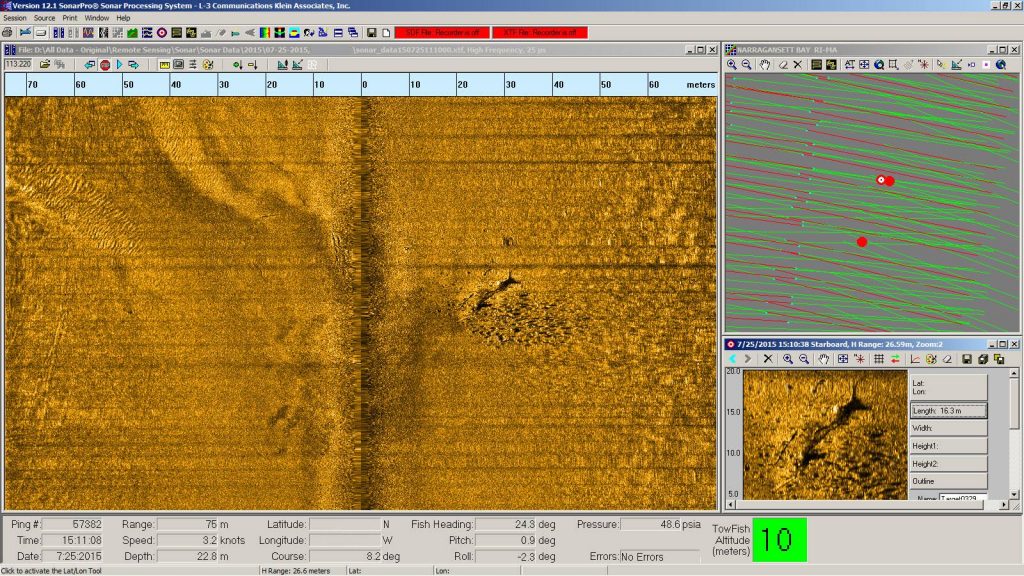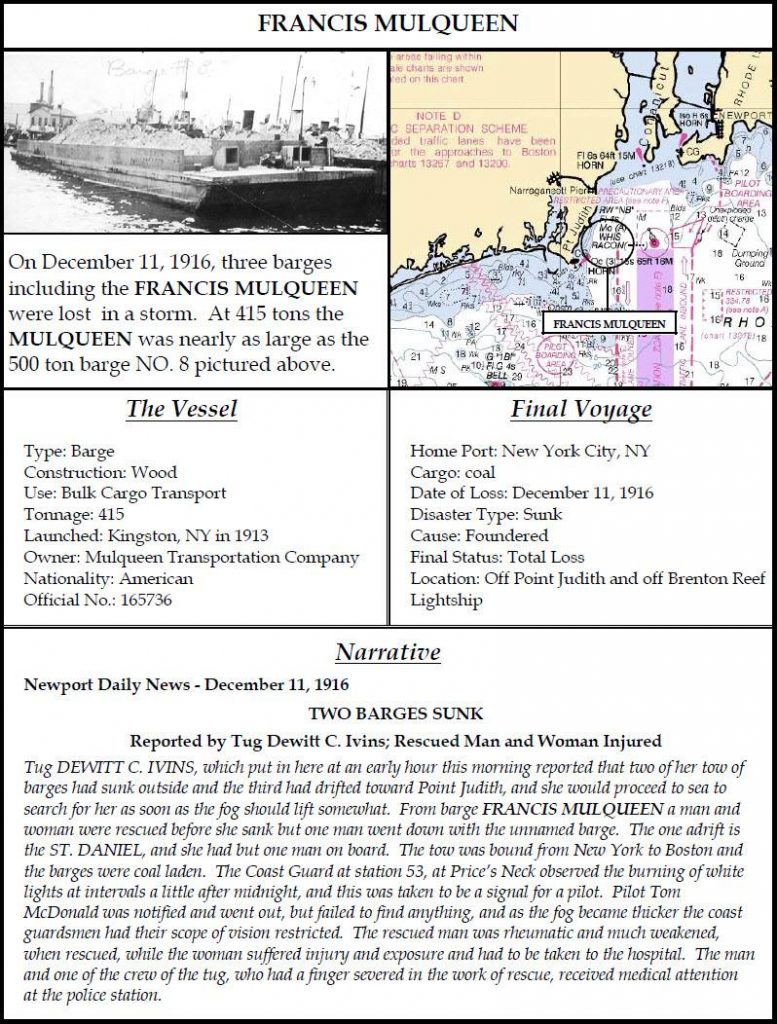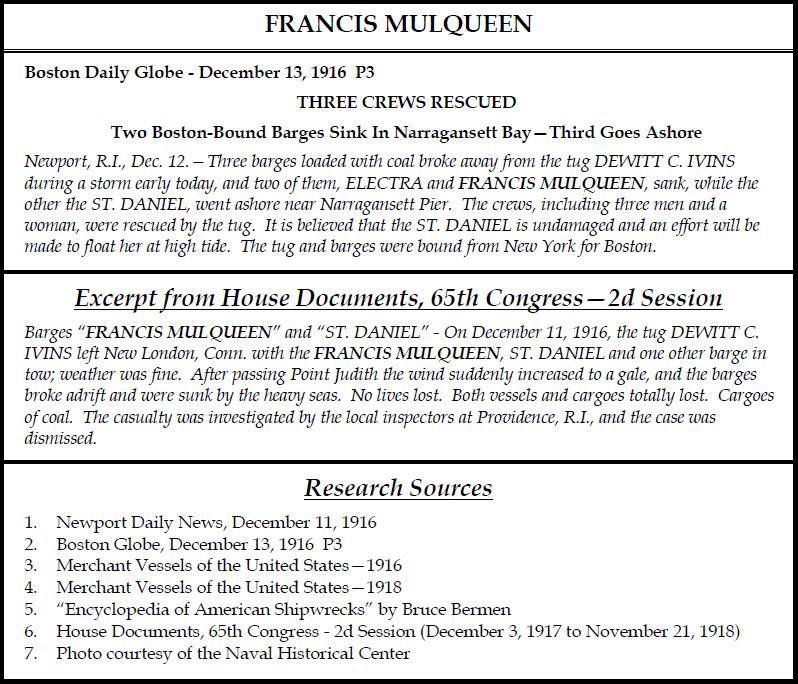Finding shipwrecks, discovering history, and having fun.
September 22, 2015I’ve been posting a lot of side scan sonar images of large, well-known wrecks that have been visited over the years by a parade of divers, however, my main motivation for being involved with this activity is to find unknown shipwrecks. When people think of an undiscovered shipwreck they likely think of an intact wreck sitting on the bottom replete with bronze artifacts and filled with all the lost jewels of Arabia just waiting to be recovered by that lucky diver. I’ve found those wrecks; well, maybe without the jewels; however overwhelmingly the new shipwrecks found in New England waters are anything but intact and often barely recognizable as a ship.
Below is a side-scan sonar image of a shipwreck that I and the gang from The Baccala Wreck Divers recently found in July of this year. We were actually looking for another wreck, the one with the jewels, when we stumbled across this one. To the untrained eye, and one not familiar with the state of wrecks in our area, this one might get passed over as something not very interesting on the bottom; but to us it was a promising target. A friend of mine dove on this target a few weekends ago and it was indeed a very old wreck. All that was left was part of the keel and remnants of its humble cargo of coal. There was something modern on the wreck though; there hung up on its remains was a fishing net. I’ve often said that we never discover a wreck, we might rediscover it, or identify it, but it’s usually been “found” long before we’ve arrived. On almost every shipwreck in our local waters you’ll find an unlucky draggers’ fishing gear tangled and caught in the old bones of the wreck. As a matter of fact if you look closely in the lower left of this sonar image you’ll see some very light “lines” that run vertically, those are trawl door marks left from draggers fishing in the area.
There are a lot of “insignificant” shipwrecks like this between New York, Providence RI, Boston MA, and points north. The majority of these are old coal barges which were fueling the homes and factories of the New England states. But just how “insignificant” are they? Each has its own personal story and from them we’d like to hear their tales. What sank this barge? Were the crew saved or lost? How did this vessel fit into the historical period in which she went down? The rise of the coal shipping industry is a subject about which volumes have been written. These “insignificant” wrecks that dot our coastline provide an anchor point around which we can more completely explore our past; and exploring is something we love to do. Whether they’re “large” previously unexplored tramp steamers like the Volund, which we were fortunate to be the first to identify and visit, or a smaller 70′ long wreck like the Phyllis, to the tiny coal barges for which we coined the phrase “Smudge Wrecks,” being the first to visit these sites provides thrills on so many levels.
Between destruction by storms, decay by shipworms, and damage by draggers we’ll probably never be able to positively identify the shipwreck we found in July; we can only make an educated guess. Fortunately we have friends that can help make that guess and below is some information on what that best guess is; it’s either the Francis Mulqueen or the Electra. Hopefully more diving and more research will solve this mystery as well.
Speaking of friends, mine make all this possible. They are all adept at diving, researching, boating, and, well, being friendly! We have a fantastic time together, on and off the water, and without them this wouldn’t be nearly half as much fun.



